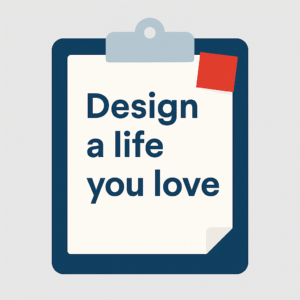Startup Saturdays
Having a CEO mindset for startups means pausing before you race ahead. It’s asking yourself: What kind of life do I want this business to create for me? instead of falling into the trap of building something that consumes every ounce of your time and energy.
When I first started Backbone America, I didn’t think about that question. I had ideas, I had drive, and I thought if I just kept producing, success would follow. What actually happened was long hours, little return, and a business that felt more like a burden than a source of freedom. It wasn’t until I came back years later—with more clarity and systems—that I realized the shift I’d missed: my business needed to be designed around my life, not the other way around.
That’s the shift I want you to reflect on too. As you think about launching or shaping your own venture, what would it look like to build with intention? To create a business that bends to fit your values, your time, and the life you want—not one that drags you through the mud?
What It Means to Design a Business That Fits Your Life
 When you think about what it means to have a CEO mindset for startups, it begins with clarity—not about revenue targets or social media strategies, but about the life you’re building toward. A CEO doesn’t just ask, “What will this business earn?” They ask, “How will this business let me live?”
When you think about what it means to have a CEO mindset for startups, it begins with clarity—not about revenue targets or social media strategies, but about the life you’re building toward. A CEO doesn’t just ask, “What will this business earn?” They ask, “How will this business let me live?”
That’s where design comes in. Designing a business to fit your life is about alignment. If you want flexibility to travel, your model might lean toward digital products or automation-heavy services. If you want deep community connection, you may choose something local and personal. Neither is right or wrong—it’s only about whether it lines up with the future you’re trying to create.
Too often, startups grow around whatever feels urgent: another client request, another platform to manage, another idea that sounds promising. But when you’re intentional, you start with your life in mind and build the business to serve it. That’s CEO energy.
Picture your ideal week two years from now. Where are you working from? How many hours are you giving your business? And what’s the business giving back to you in return?
The CEO Mindset Shift vs. Employee Habits
A CEO mindset for startups requires unlearning a lot of the habits we carry from traditional jobs. Employees are trained to think in terms of tasks, deadlines, and rules set by someone else. We’re used to being measured by how many hours we put in, not by whether those hours are moving us toward freedom.
That’s where the shift begins. CEOs don’t ask, “How do I get this done?” They ask, “Is this worth doing at all—and if so, who or what can take it off my plate?” It’s a different kind of energy, one that focuses less on effort and more on design.
I noticed this in my own journey. When I first tried to grow Backbone America, I was stuck in employee habits. I thought success was about how much I could produce and how quickly I could deliver. But that mindset kept me running in circles. Later, when I relaunched with stronger systems, I approached it differently: I stopped trying to do everything myself, and I started asking how the business could run without me being the bottleneck.
For you, the shift might look like:
Moving from trading hours for dollars to creating offers that scale.
Shaping boundaries with clients instead of saying yes to everything.
Building systems and automation early, so the business doesn’t depend solely on your memory or energy.
Where are you still showing up in your business like an employee—focused only on tasks and time—when you could be stepping into CEO energy and thinking about design and sustainability?
Practical Ways to Shape Your Business Around Your Life
When you embrace a CEO mindset for startups, you stop building by default and start building by design. That means choosing models, systems, and practices that match the life you want—not the life someone else says you should have.
Here are a few ways to put that into practice:
Choose the right model. A coaching business, a digital course, a product-based shop—they all require different rhythms. Ask yourself: which one gives me the balance of income and freedom I’m looking for?
Price with intention. Don’t just cover costs. Price in a way that supports the lifestyle you’re designing. A CEO looks at profit margins as guardrails, not afterthoughts.
Build systems early. Automations, templates, and clear workflows may feel “extra” when you’re just starting out, but they keep your business from turning into a treadmill later.

When I came back to Backbone America after teaching, this was the difference-maker. Instead of asking how much I could handle, I asked how I wanted to live. Then I chose offers and systems that matched that answer. That single shift is why my business feels sustainable now.
If your business had to run with only 10 hours of your time each week, what would need to change? What systems or choices would make that possible?
What Happens When You Don’t Design for Fit
Without a CEO mindset for startups, it’s easy to fall into survival mode. You say yes to everything. You chase every opportunity, hoping one of them will stick. You build a business that demands more from you than it gives back.
That’s exactly what happened during my first chapter of Backbone America. I poured myself into creating courses and content, convinced that if I just worked harder, it would all come together. The work itself wasn’t the problem—the problem was how I built it. I hadn’t thought about whether the model fit my life, whether I had the systems to sustain it, or whether I was designing something I actually wanted to run day after day.
The result? Long hours, financial stress, and eventually stepping away altogether. My business wasn’t designed for me—it was dragging me down mentally, emotionally, and financially.
This is the risk when you build reactively instead of intentionally. A business that doesn’t fit your life will consume it. And once you’re in that cycle, it’s hard to imagine you could have built differently from the start.
Think about your current idea or early-stage business. Does it feel like something you control, or does it already feel like something controlling you?
Reflect and Recalibrate
Adopting a CEO mindset for startups isn’t just about strategy—it’s about pausing long enough to ask better questions. It’s easy to get swept up in momentum, but CEOs know that clarity comes before growth. This is where reflection matters most.
Take a step back and ask yourself:
What do I want more of in my life? (time, travel, creative space, financial margin)
What do I want less of? (stress, reactive deadlines, projects that drain me)
How can my business serve those answers instead of stealing from them?
Where am I designing with intention, and where am I defaulting to habits?

When I rebuilt Backbone America, these questions changed how I worked. I wanted to travel. I didn’t want to work nonstop. And I wanted to bring in income, not have the business drain my coffers.
To get the business I wanted, I had to change my perspective of what it meant to be a business owner. I stopped measuring success by how much I could get done in a week and started measuring by how well my business fit the life I was trying to build. That shift turned what once felt like a burden into something sustainable.
Before you move forward with your business idea, set aside ten quiet minutes to write down the life you want—and then map how your business can serve it. Don’t just launch. Design.
Final Thoughts
At its core, having a CEO mindset for startups means remembering that your business should serve your life—not the other way around. The earlier you anchor that truth, the more freedom and sustainability you’ll carry into every decision that follows.
You don’t need to wait until you’re overwhelmed to redesign. You can start with clarity now. Build your business like a CEO—around your values, your vision, and the life you actually want to live.
If this reflection sparked something for you, I invite you to go deeper. Join my mailing list, where I share powerful tools and strategies to help you design a business that gives back to your life. Not recycled advice, not pushy sales copy—just guidance you can use to build with intention and confidence.





